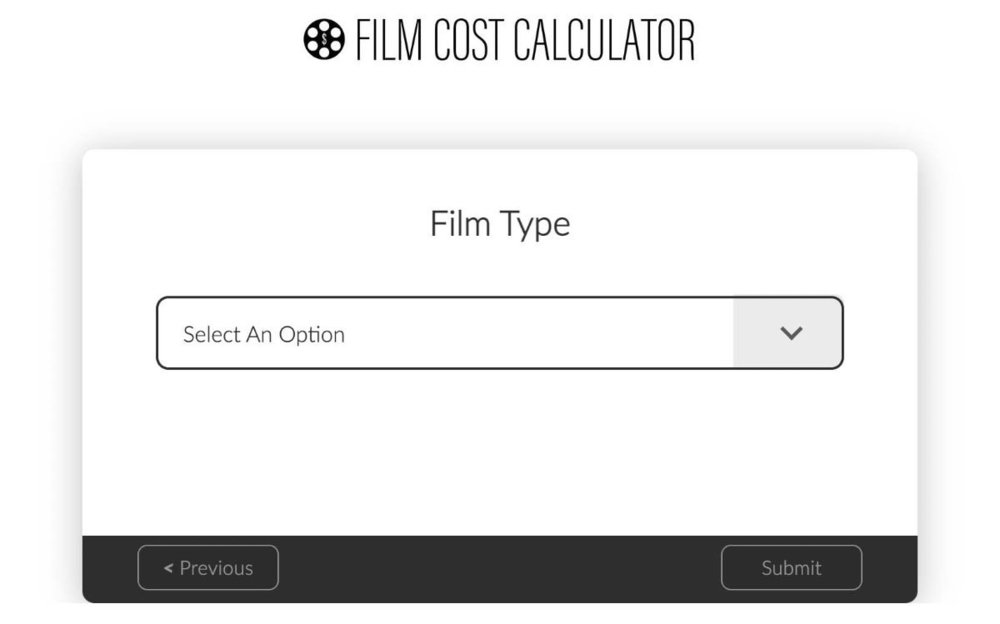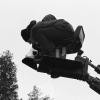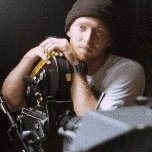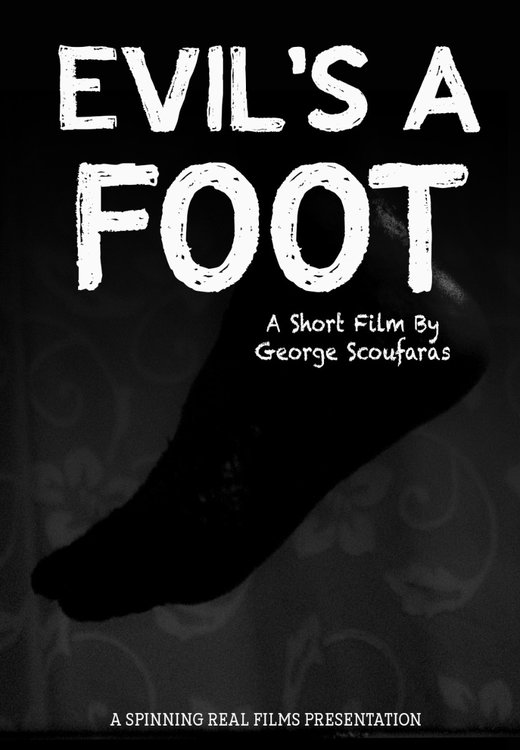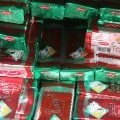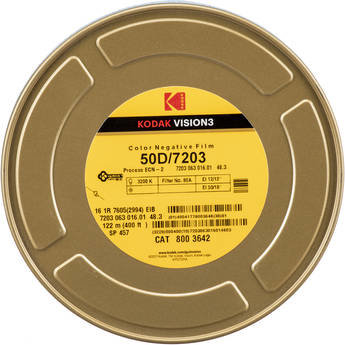Search the Community
Showing results for tags 'KODAK'.
-
Kodak Ad 1943 Kodak Archive - DDTJRAC An early rare-element aerial lens by Kodak. I think the glass was radioactive, but not sure. Were there any cine' lenses made with radioactive glass? I was going to post it in Off-Topic, but have not been able to post or view that section for a few days now. <><><><> Daniel D. Teoli Jr. Archival Collection Daniel D. Teoli Jr. Small Gauge Film Archive Daniel D. Teoli Jr. Advertising Archive Daniel D. Teoli Jr. VHS Video Archive Daniel D. Teoli Jr. Popular Culture Archive Daniel D. Teoli Jr. Audio Archive Daniel D. Teoli Jr. Social Documentary Photography
-
DDTJRAC - Click to View <><><><> Daniel D. Teoli Jr. Archival Collection Daniel D. Teoli Jr. Small Gauge Film Archive Daniel D. Teoli Jr. Advertising Archive Daniel D. Teoli Jr. VHS Video Archive Daniel D. Teoli Jr. Popular Culture Archive Daniel D. Teoli Jr. Audio Archive Daniel D. Teoli Jr. Social Documentary Photography
-
- kodak
- kodak park
-
(and 5 more)
Tagged with:
-
I've got a few photography related 16mm films in the Archive. One is a fantastic 16mm salesman's reel on flash photography. (non-Kodak.) This one on paper looks interesting. Hopefully it has some of the paper coating production. It will be a long time before it ever gets scanned. You know the story with trying to get a scanner. Some samples from the Kodak paper film... photos: eBay <><><><> Daniel D. Teoli Jr. Archival Collection Daniel D. Teoli Jr. Small Gauge Film Archive Daniel D. Teoli Jr. Advertising Archive Daniel D. Teoli Jr. VHS Video Archive Daniel D. Teoli Jr. Popular Culture Archive Daniel D. Teoli Jr. Audio Archive Daniel D. Teoli Jr. Social Documentary Photography
-
- 1
-

-
- kodak
- kodak paper
-
(and 3 more)
Tagged with:
-
Story of the World's Finest 16mm Movie Camera D. D. Teoli Jr. A. C. : D. D. Teoli Jr. A. C. : Free Download, Borrow, and Streaming : Internet Archive I've got a ton of books that need to be scanned. Will just put them in this section. Too much work wasting time to see if they get approved to the book section. If they want, they can just move them or put a dupe there. Vast majority are old and deal with vintage subjects. <><><><> Daniel D. Teoli Jr. Archival Collection Daniel D. Teoli Jr. Small Gauge Film Archive Daniel D. Teoli Jr. Advertising Archive Daniel D. Teoli Jr. VHS Video Archive Daniel D. Teoli Jr. Popular Culture Archive Daniel D. Teoli Jr. Audio Archive Daniel D. Teoli Jr. Social Documentary Photography
-
- kodak
- cine kodak
-
(and 2 more)
Tagged with:
-
They didn't approve for book section, so putting up here. 2 Kodak books may be of interest to the cinematographer. JPEG scans only. Kodak Professional B&W Films F-5 D. D. Teoli Jr. A. C. : D. D. Teoli Jr. A. C. : Free Download, Borrow, and Streaming : Internet Archive Kodak Filters For Science & Tech Uses B-3 D. D. Teoli Jr. A. C. : D. D. Teoli Jr. A. C. : Free Download, Borrow, and Streaming : Internet Archive <><><><> Daniel D. Teoli Jr. Archival Collection Daniel D. Teoli Jr. Small Gauge Film Archive Daniel D. Teoli Jr. Advertising Archive Daniel D. Teoli Jr. VHS Video Archive Daniel D. Teoli Jr. Popular Culture Archive Daniel D. Teoli Jr. Audio Archive Daniel D. Teoli Jr. Social Documentary Photography
-
I entered a local Ministry of Culture visual arts competition a week ago…..and I won the ‘video’ category with this piece (originally just intended as a family heirloom). I re-edited the footage processed for me by Cinelab London in DaVinci Resolve. Not many entries from our 33,000 population, so not exactly a Cannes winning equivalent haha but the prize money will be used to shoot something else on my beloved 16mm film. Watch in 2K if you can. The grain is a bit sludgy no thanks to YouTube…..and no I will not be adding ‘award winning cinematographer’ to my legend hahahaha wtf as if
-
hey all. wanted to share this film cost calculator that I've been working on for a while. www.filmcostcalculator.com Eventually I'd like to add more equations that can list out alternative results to compare various perf options. Also working on a 1000' roll calculator. Hope it helps! Feel free to comment with any notes and ideas.
-
Hey everyone, Like most in this forum I'm a hardcore film nut, and like to learn more every day, to understand the medium and improve. Now with the resurge of 65 film for Kodak, and people ramping up hand rolling short ends into their cameras, I was curious to know what companies that actually made 65 mm film. Kodak still does, but did Fuji ever venture into the IMAX / 65mm size? Were there other options? And also, has anyone ever made a black/white 65 mm stock? (clearly a VERY specific look but...) C
- 19 replies
-
- 65 mm
- film stock
-
(and 2 more)
Tagged with:
-
Hi, I'm a student cinematographer with a shoot coming up, on 16mm with the Arri SR3. I have a couple of shoots planned during the blue phase of magic hour (civil twilight and the blue hour), on a beach. I think I'm correct in saying that I need to shoot with daylight colour balance to match the blue tones in the sky as tungsten will make them even cooler? I was wondering if anyone has any thoughts on the different aesthetics of 500T and 250D? (aside from the obvious sensitivity and colour balance differences). Is there any particular advantage (visual or otherwise) to shooting 500t with an 85 or 250d straight up? All the best, Connor
-
Kodak (Mexico?) Inkjet Paper Deterioration See yellowing edge of paper compared to white paper. The entire sheet of Kodak paper has yellow blotchiness. The edge is the easiest way to see the yellowing in a photo. If you have a laptop or unbalanced monitor, you may not be able to see the yellowing. This was Kodak's cheapest paper at the time. From what I recall, the paper was made in Mexico. Paper shown here is 10 years old, stored under normal household conditions. It started to show yellowing about 3 to 4 years ago. All of the rest of this Kodak paper shows the same yellowing. It is hard to get a good photo or scan of the yellowing, but it is easily detected by looking at it under 5,000k lighting. A couple of other major photo paper makers also suffered from yellowing of their cheapest brand of inkjet paper. I didn't record the maker's names. I didn't purchase this paper to print on. I didn't purchase this paper to do archival testing. All these papers were purchased to use as interleaf while printing artist books with an inkjet printer. Unless interleaf was used while printing, the pages would transfer freshly printed ink to the page stacked on it. This was a big problem when using matte black ink, but not a problem with gloss black ink. RC gloss or RC semi-gloss inkjet paper worked best as interleaf as it did not accept any ink transference on the RC coated verso of the paper. <><><><> Daniel D. Teoli Jr. Archival CollectionDaniel D. Teoli Jr. Small Gauge Film ArchiveDaniel D. Teoli Jr. Advertising ArchiveDaniel D. Teoli Jr. VHS Video ArchiveDaniel D. Teoli Jr. Popular Culture ArchiveDaniel D. Teoli Jr. Audio ArchiveDaniel D. Teoli Jr. Social Documentary Photography
-
- kodak
- museum studies
-
(and 3 more)
Tagged with:
-
REAL FILM at film festivals... Kind of makes sense, right? Well, not on the modern "film" festival circuit. Every film festival I have attended or been a part of the last five years (live or online) is primarily about HD. Usually I am the only filmmaker who shoots on film when my films play at a festival, unless the festival is truly specific to ACTUAL FILM, like the United States Super 8 Film and Digital Video Festival. You see how the title of the festival states FILM and digital video...? Recently I attended the 2022 Spring Austin Micro Film Festival. A really cool Festival! I had two experimental films play, WAITING FOR LEGROS and WAITING FOR LEGROS 2: THE EYE OF THE TIGER Both films shot on Super 8. I was surprised to see another film the was shot on film at the festival, and it was really good! I am pleased to announce that my latest short film THE UNMENTIONABLES (16mm, Tri-X 7266) will play at the 2022 Oregon Short Film Festival. I hope to see more films shot on film in the future! Don't give up on it!
-
Excellent++ condition original ARRI film magazine for Arriflex 16 BL movie camera 500ft 16 mm film single and double perforation, full working condition. In film mag mechanics is serviced, clean and clear inside, outside have small scratchers for using. The price: 150 USD+ shipping New Kodak 16 mm film stock 1 can 400 ft (122m) - 7207 - 250D daylight color film, iso 250. Purchased in Kodak's official embassy in Russia, in 2020. Froze refrigerating storage. The price: 140 USD+ shipping email: schubert@ngs.ru Worldwide shipping.
-
Arriflex 435 ES - 4-perf, IVS video assist PAL, FEM (functionality expansion module), TimeCode module, Arriglow module - Base plate BP-8 + dovetail plate + 19mm rods long, short 3x 400ft magazine + case 1x 400ft magazine (35-III model) 3x 200ft magazine + case finder extension FE-3 finder extension FE-5 ground glass + arriglow: - super35 2,35 - super35 1,85 - super35 silent gate 1,33 - normal35 2,35 - normal35 1,85 - normal35 1,33 P+S Technik uRC - remote control for speed ramps Video-top 100% + SCA-2 (for steadicam low-mount) EasyLOOK video-assist system - digital system for recording and playback - generates Quicktime files on HDD - wireless option Transvideo TITAN transmitter + receiver set for analog SD wireless video Transvideo Rainbow II 6,5” monitor - bright PAL monitor - anamorphic desqueze support PHOTOS: https://photos.app.goo.gl/xaJqzid9JwCFyyxY8 Camera is located in Bratislava, Slovak Republic, EU Shipping within European Union will cost €550 Shipping outside EU is not possible at the moment. In case of personal pickup, I can supply old Kodak film stock (10 rolls) for free. Payment via PayPal, incl. buyer´s protection.
-
Hi all, Can't remember from where, but I've heard of the ability to shoot on print stock just as one would on regular motion picture stock, with the idea of having a very punchy and contrasty look. Does anyone have experience with this? Looking at the Kodak catalog, it seems print stock primarily comes in 2,000' rolls, which would make the process of downspooling a bit tedious...
-
Hi, I have been looking everywhere and have found absolutely NOTHING on how to tear and and repair/lubricate old C and S mount cine lenses by Kodak and Schneider. These lenses aren't worth the cost of sending out, but are too expensive to toss. I'd love to learn how to work on them. If anyone has videos, manuals, advice or links to help, I'd be VERY grateful. John
- 8 replies
-
- Repair
- Cine Lenses
-
(and 2 more)
Tagged with:
-
Just for educational purposes, here is some footage from a short I shot last year. We were stealing this, so we couldnt light anything. It's all available light. https://vimeo.com/174719862 We shot 5219 with a 2 stop push. I rated it at 1250, which gave me about a t/2 in some places, but often my meter said "E.U.", so I really wasnt sure how it would turn out. We I went in for the transfer i was very very impressed by how it held up, even with it only being 2-perf. I'm so used to thinking that you need to shoot digitally if you want to shoot available light at night, but this turned out exactly how I had hoped. We shot on super speeds at a t/1.4-2 split. The transfer was on a Spirit 2k at Fotokem in LA. We set basic looks as we went, and that's what this is, just a basic grade, right out of the scanner. If you want to download the 2.5gb 422HQ you can find it here: https://www.dropbox.com/s/n5qo2cm9au9wo7k/L9974909_CR_A15_A17.mov?dl=0 Here is the finished short: https://vimeo.com/130967218
-
Hello All, I just completed a new short film shot on 16MM Kodak film via an Arri SR3 HS. I wrote and directed this fun little horror short, and my producing partner, and friend, Evan Samaras did the cinematography (say hi in the comments, Evan). Not only did Evan and I work behind the camera, but also in front of it. The short features only two characters played by us. Due to COVID-19, we wanted to make something small with a minimal, to non-existent, cast and crew. We have submitted the film to some festivals so, for the time being, it is only up privately with a password on our Vimeo page. The link and password are below, for your viewing pleasure. Please let me know your thoughts and critiques. Anything feedback would be greatly appreciated. Password: SRF2020 Thank you all in advance! Keep shooting!
-
- short film
- 16mm
- (and 4 more)
-
Hey everyone, I'm looking for old, expired 400' rolls of 16mm that I can use to practice loading. I'm planning to start shooting 16mm more seriously and don't want to have to worry about potentially wasting brand new film while I familiarize myself with the process. Thanks!
- 2 replies
-
- dummy stock
- 16mm
-
(and 2 more)
Tagged with:
-
Bought eight 400ft rolls of 16mm double-x about nine months ago directly from Kodak for a shoot that was cancelled due to covid. It's been in a refrigerator since then, so should be just about as good as new. Prefer to sell it all, but happy to sell in parts as well. Located in LA, so local pickup/drop-off preferred but can ship if paid for. Looking for 130/roll, but open to offers.
-
Hi, Does anyone knows how to expose this film in the two configuration mentionned ? is it possible to have good result in low light by pushing in development ? (any experience with that ?) I am opened to any tips regarding reversal film treatment as a 1st AC (conservation, use and elese ...) For upcoming projects, i am wondering how it would look like. The first one is a low light / hangar / industrial environment with light coming from a dancefloor with 5 people on it (the aim would be to have color effect / aberration and dynamism like in the 'domino' movie, the dancefloor lights would help accomplishing this nighclub ambiance) The second one is more of a natural ambiance in bright daylight with characters in the frame running on a road and other narratives sequences in the city ... Thanks in advance ! cheers
- 4 replies
-
- reversal process
- kodak ektachrome 100d
-
(and 7 more)
Tagged with:
-
Hi to all, I am seeking for example of filter use on 16 mm. It can go from glimmer, black promised to effect filters like stars and else (ideally from footages, test or existing movies) Shooting soon on aaton xtr, zeiss 12 mm + zeiss zoom 20-120 + eventually 7219. A dance performance in a studio with natural light , about T'4 coming from outside with top windows. Thanks in advance
-
Hi All, I'm selling 35mm short end recans. Selling all footage at .25/ft. and have the below stocks available: Kodak 5219 Vision 3 500T Color Negative - 5,817ft Kodak 5260 Vision 2 500T Color Negative - 400ft Kodak 5212 Vision 2 100T Color Negative - 3,687ft Kodak 5201 Vision 2 50D Color Negative - 400ft Kodak 5217 Vision 2 200T Color Negative - 1,395ft Fuji 8583 - 400ft Fuji 8563 - 400ft All recans have over 250 ft of film, some are full 400ft recans. Please PM me or email hschleiff@gmail.com if interested in purchasing. I am based in NYC, but can ship if needed. Best, Harry
- 3 replies
-
- 35mm film
- short ends
- (and 4 more)





